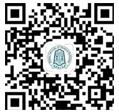报告人:Daniel Lacks 教授
( Case Western Reserve University )
时间:3月22日(周二)9:30-10:30
地点:化学工程学院A203
报告人简介:
Daniel J. Lacks is the C. Benson Branch Professor and Chair of the Department of Chemical and Biomolecular Engineering at Case Western Reserve University. Dr. Lacks received his undergraduate degree in chemical engineering at Cornell University, his PhD in chemistry at Harvard University, and carried out postdoctoral research at MIT. He is the Editor-in-Chief of the Journal of Electrostatics, and was the past President of the Electrostatics Society of America. His research addresses the properties of materials using statistical mechanics and molecular simulations, and the triboelectric charging of surfaces using experiments and theory.
报告内容:
Contact charging occurs when two materials are brought into contact and then are separated – as a result of the contact, charge is transferred such that one material becomes charged positively and the other becomes charged negatively. Everyone is familiar with this effect, even children who have ‘experimented’ by rubbing a balloon on their hair and seeing the balloon and hair become highly charged. But which material charges positively and which charges negatively? The answer to this simple question is not really known. In contrast to the tremendous progress in most fields of science, the understanding of contact charging is not much better now than it was 2500 years ago. In our research, we use a combined experimental-theoretical approach to study the factors affecting contact charging, with a focus on the charging that occurs as granular materials flow.

